Chapter 1 - Recommendations based on Fan Evaluations
Chapter 1 - Recommendations based on Fan Evaluations
The Fans Assessment Numeration System (FANS) unit (see Figure 1.28) uses a horizontal array of five propeller anemometers (the instrument used for measuring wind speed) to obtain real-time airflow measurements as the array is moved up and down along the fan. With the aid of a computer, approximately 1.8 million air speed readings are obtained in the three minutes it takes for the instruments to move up or down across the fan. The average speed is multiplied by the effective cross-section area of the FANS unit to obtain the mean air flow rate. To test a fan, the FANS unit is positioned in front of the fan and sealed to the wall using duct tape. Measurements are taken at six static pressures ranging from free air to approximately 0.20 inches of H2O.
Figure 1.28 - Equipment used in the fan evaluations during PHES farm visits.
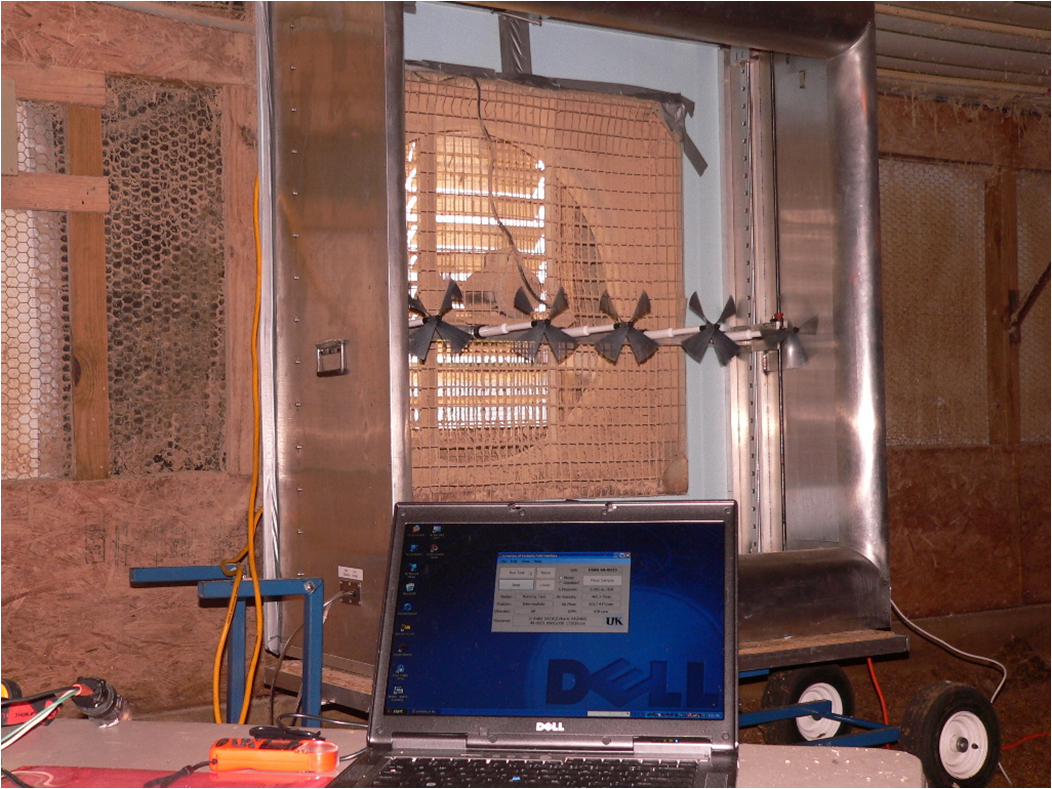
Fan revolutions per minute (RPMs) and air movement (Cubic feet per minute – CFMs; and velocity) are directly related. For example, a fan turning 10% slower in RPMs moves 10% less air. Similarly, a fan turning 15% slower moves 15% less air than normal. Proper fan installation and maintenance is required to maintain house conditions that are optimal for bird growth and feed conversion.
Fan performances varied from house to house as well as within a poultry house (see Figures 1.29 and 1.30). Nine fans of different brands and models were compared to the test results from the BioEnvironmental and Structural Systems (BESS) lab at the University of Illinois. The results are shown in Figure 1.31.
Figure 1.29 - Performance for five 54-inch tunnel fans in a single broiler house

Figure 1.30 - Performance for four 48-inch fans from a single broiler house

Figure 1.31 - Comparison of the fan performance results from the PHES study with BESS data
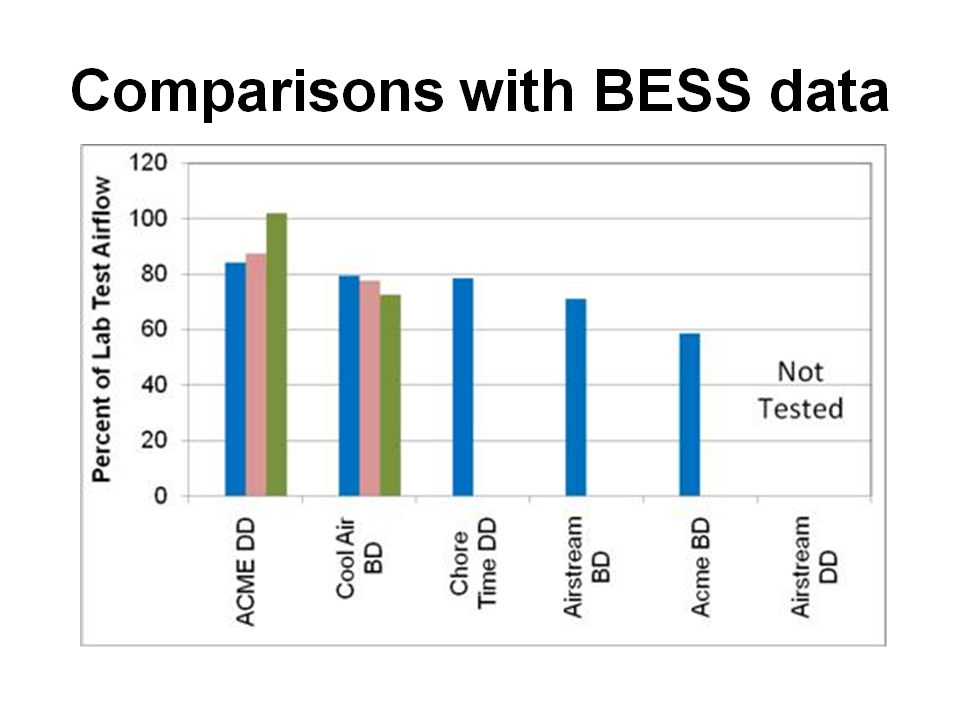
Proper installation of the fans is very important for maximum fan performance. Figure 1.32 is an example of an improperly installed fan. There is a crack between the fan and the poultry house wall allowing air to circumvent the flow through the fan decreasing the efficiency of the fan.
Figure 1.32 - Example of an improperly installed fan
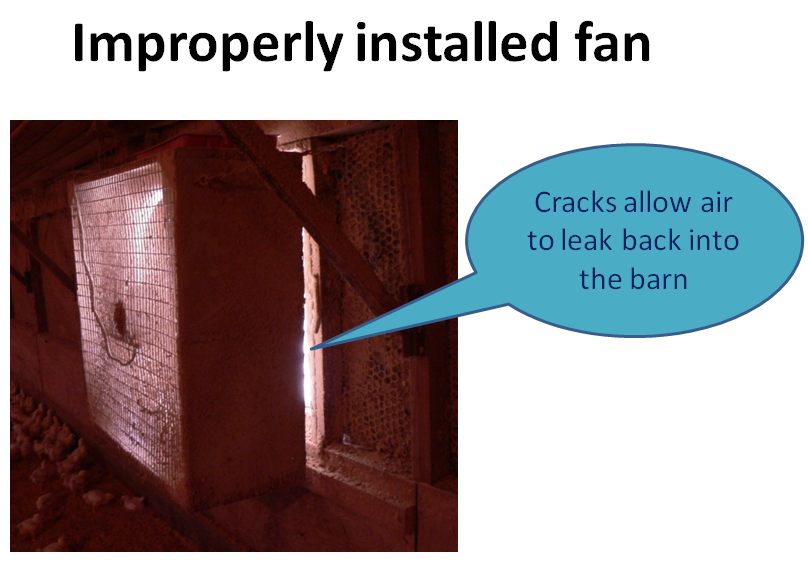
Both fan performance and house tightness influence the air speed that can be achieved with tunnel ventilation. For most of the farms participating in the PHES, two fans were evaluated for their ability to achieve the air speed required for tunnel ventilation. The recommended speed for tunnel ventilation of broilers is 500-600 feet per minute.
The average air speed with all the fans running was measured at broiler height, 23 m (~75.5 ft) upstream from the tunnel fans. Air speeds achieved varied from 398 to 620 CFM (see Figure 1.33). Sixteen of the 25 houses evaluated had air speeds below the target 500 CFM. Several factors influence fan efficiency, as discussed below.
Figure 1.33 - Average air speed measured at broiler level with all tunnel fans running
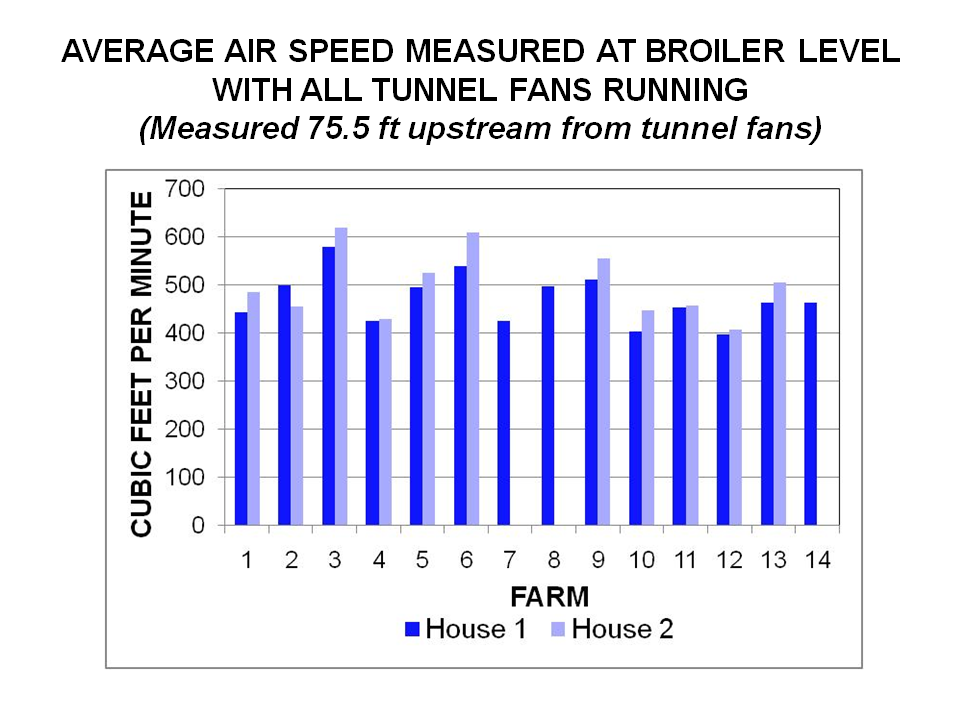
Clean shutters fans
Fan blades and shutters should be checked on a weekly basis. Previous research has shown that if shutters and blades are allowed to become caked with dust, fan performance can be cut by as much as 30%.This means that a fan delivering 400 RPMs when clean may deliver only 280 RPMs when dirty.
During the PHES evaluations of some of the sample broiler houses, the efficiency of fans while clean and dirty was measured. As shown in Figure 1.34, the amount of air moved by a fan at any given static pressure is less when the fan is dirty.
Figure 1.34 - Comparing efficiency of clean versus dirty fans
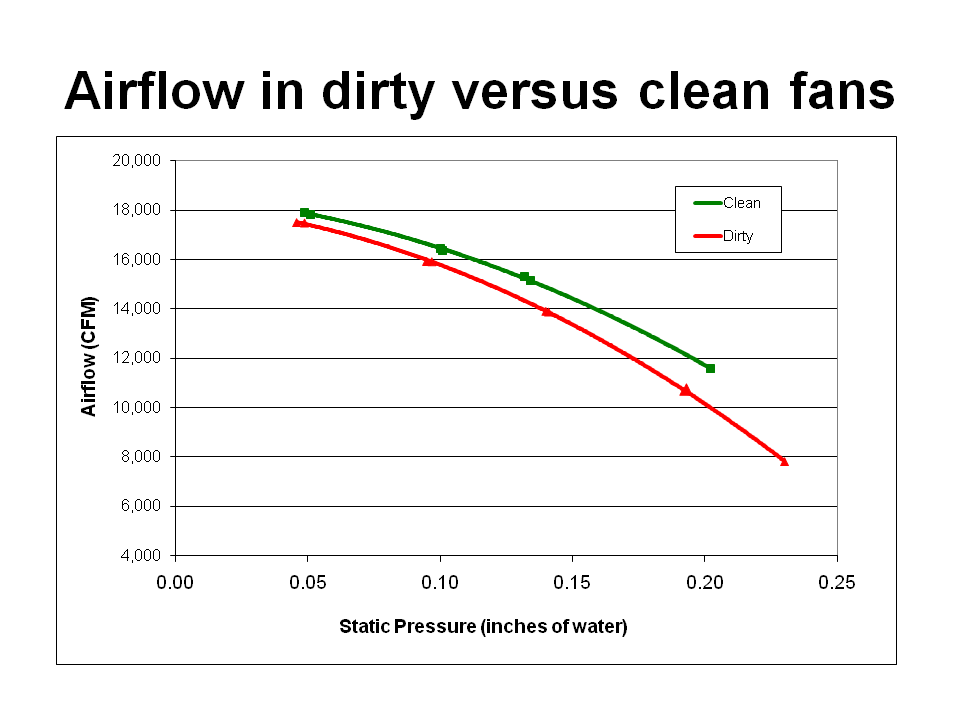
Replace worn fan belts
It is the fan belt and pulley that determine the RPMs of a fan. As a fan belt wears, it becomes thinner and rides deeper in the pulley than when new (see Figures 1.35 and 1.36). The effect is exactly the same as installing a smaller motor pulley: the fan RPM speed is reduced. Tightening a worn belt does not cure the problem, it needs to be replaced.
As shown in Figure 1.37, the amount of air moved by a fan at any given static pressure is less when the fan belt is worn.
Figure 1.35 - Comparing new versus worn fan belts
A. New fan belt
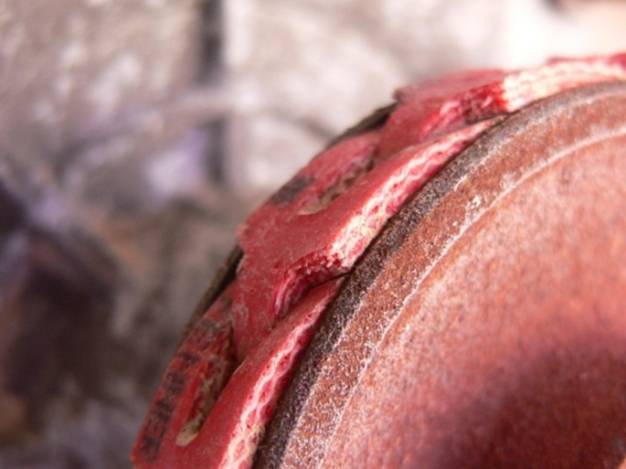
B. Worn fan belt

Figure 1.36 - Comparing new versus worn pulleys
A. New pulley

B. Worn pulley
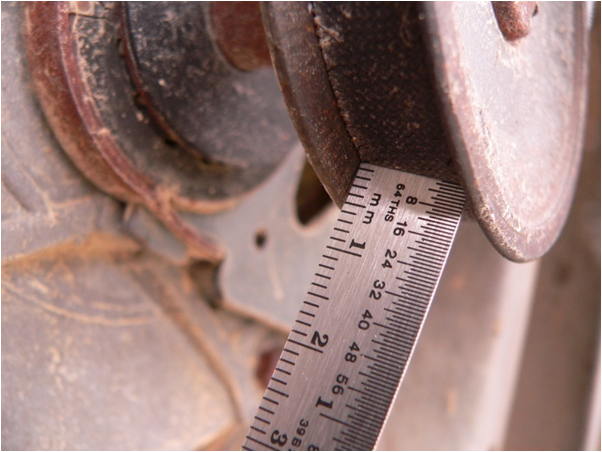
Figure 1.37 - Comparing the airflow performance of fans with new and worn V-belts
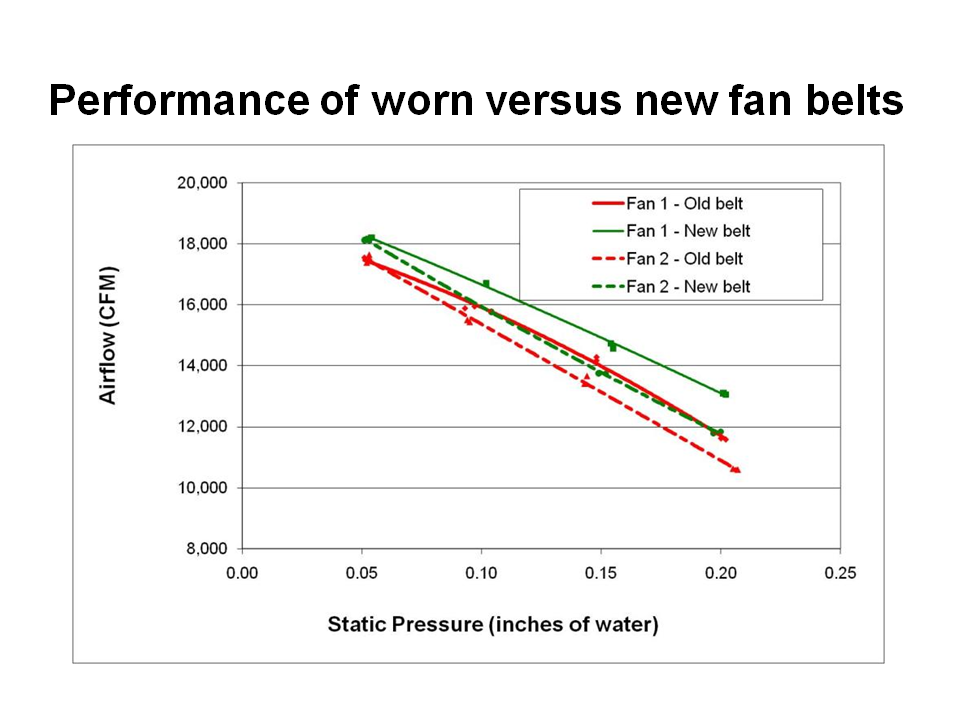
Check all fans to ensure that the motor has the correct size drive pulley
In order to maximize belt life and fan performance it is important that the motor and fan hub pullet are in line with one another. If the motor pulley and fan hub pulley are not in perfect alignment the belt will twist causing the belt to wear unevenly. The accelerated belt wear not only leads to reduced air moving capacity but also increases costs due to a shorter functional life – a belt that might have lasted well over a year may need replacing in as little as a few months if not properly installed. One way to check to see if the motor pulley is in the proper position is to simply place a long straight edge (such as a ruler or piece of angle iron) across the fan hub pullet so that it extends down to the motor pullet. Position the motor pullet unit the outside edges of both pulleys are in line.
It does not take a lot of tension to keep belts from slipping. Typically only about five pounds of tension are required to keep a fan belt from slipping. If a fan motor is not firmly affixed to the fan supports, excessive belt tensioning can cause the fan motor to be lifted/pulled down out of its proper orientation. As a result, even though the pulleys may be in line with one another the fan motor pulley may be twisted five degrees or more out of alignment.
